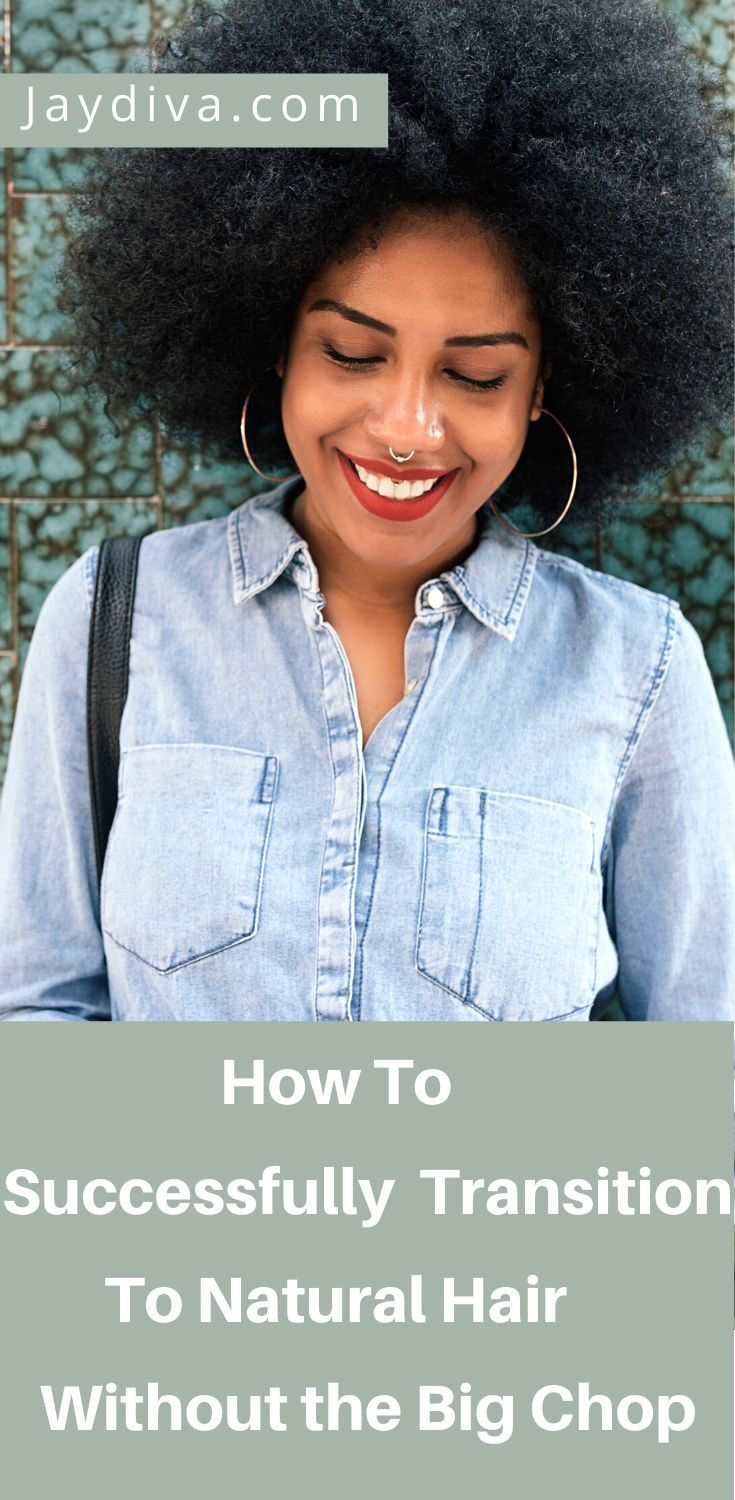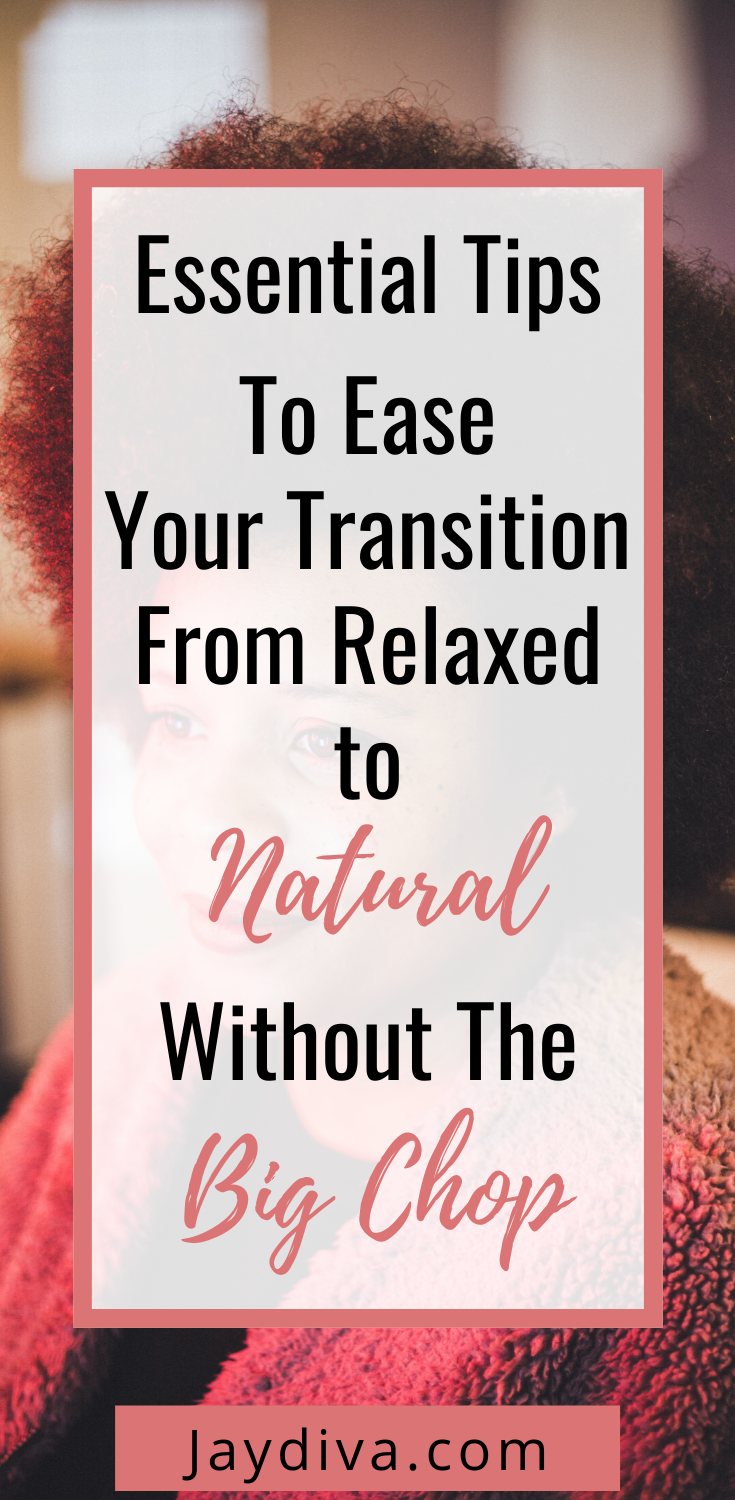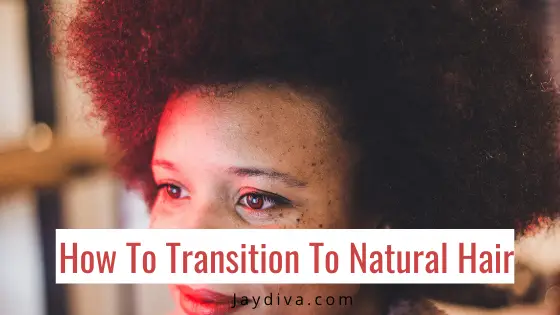Now you have decided to finally go the natural route. Maybe as a result of numerous setbacks in your relaxed hair care journey or just because you want to go natural PERIOD. However, you don’t want to chop off all your hair because obviously, that’s a bit extreme. Like many, you have probably combed through the internet searching for how to transition from relaxed to natural hair without the big chop and you are still left unsatisfied.
In this post, you will find an ultimate guide to transitioning to natural hair with ease.
This Post Contains Affiliate Links
Table of Contents
Get The Right Mindset
Before you commence your transitioning journey to natural hair you need to be prepared mentally. When relaxed you often got the itch to get a relaxer when you began to see more and more new growth. However, the reverse is the case while transitioning. In this process, you need to embrace your new growth and baby them.
It is important to note here that patience is the name of the game. the further down you go in the transition, the more patience is needed especially on wash days.
Now let’s get into the actionable steps to help you transition from relaxed to natural hair.
#1 Keep Relaxers Far
This seems like an obvious point because indeed you need to stop having relaxers to transition to natural hair. I remember my first attempt at transitioning. I had bought a relaxer and kept on the side for when I would be frustrated with handling my new growth. and Yours truly got up late one night and relaxed my 9-month post relaxed hair and regretted it almost immediately. So try to resist the urge to keep a relaxer handy.
#2 Get the Right Tools
When you are just getting started with your transitioning journey, it is pertinent that you get the right tools needed to make this a relatively smooth process, especially on wash days.
A few of the tools you will be needing are;
Pin for later!

#3 Deal With Your Hair In Sections
This is essential in minimizing breakage while handling your hair. It is always easier to work in at least four sections of hair when cleansing, detangling, deep conditioning, and moisturizing. It also creates more surface area for the application of hair products.
#4 Keep Your Hands Off Your Hair
Irrespective of the state of your hair, be it relaxed or natural. Low manipulation styles and protective styles should be your go-to styles if you want to retain any length. The more new growth you get as you go along in your transitioning journey, the more you want to wash, deep condition, style and let it be. Styles that blend the two textures such as twist outs, flat twists, braid outs, and simply putting them in cornrows or braid extensions work best for transitioning hair.
#5 Use Mild Cleansers
When transitioning from relaxed to natural you would observe that your hair becomes dryer and dryer. one of the ways to combat this is to wash the hair with very mild cleansers such as sulfate-free shampoos, cleansing conditioners, or rinse out conditioners. This prevents overdrying that usually occurs with sulfate-containing products that strip the hair of its natural oils leaving it dry and prone to breakage.
Try: Shea moisture raw shea butter moisture retention shampoo
#6 Maintain Good Moisture and Protein Balance
During the transitioning process, you will have your new growth and your relaxed hair both coexisting. The natural hair is in its healthy state, while its relaxed counterpart is damaged. where they meet is called the line of demarcation. This is where a lot of breakages happen. To combat this, deep condition weekly alternating between a moisturizing deep conditioner and a protein deep conditioner. This keeps the hair strong and flexible at the same time.
Try: Shea moisture manuka honey and mafura oil intense hydration mask
TGIN miracle repaiRx strengthening reconstructor
Related Post: Simple Natural Haircare Regimen for Beginners
#7 Maximize Moisture
Moisture is super important when on your transitioning journey. keeping your hair well moisturized prevents breakage.
There are various ways of doing this;
- Pre-poo: This is applying oil or a conditioner to your hair 30-45 minutes before your shampoo. This infuses the hair with moisture so the hair is not left dry after shampooing
- Hot Oil Treatment: This another way to increase your hair moisture levels. This is done by preheating a natural oil such as olive oil, coconut oil, avocado oil any of these work fine. Then apply this to your hair as a pre-poo
- Bagging: This simply means applying a moisturizer to your hair and they covering your hair with a plastic bag for a few hours or overnight.
#8 Trim Your Hair Gradually
You are transitioning because you don’t want to go the extreme route of chopping off all your hair. So this leaves you with the option of gradually trimming off your relaxed hair as you grow more natural hair. Trim off about 1.5-2 inches of hair every 3-6 months to trim off your damaged relaxed hair while maintaining your length.

I hope these tips help you transition smoothly to natural.
























